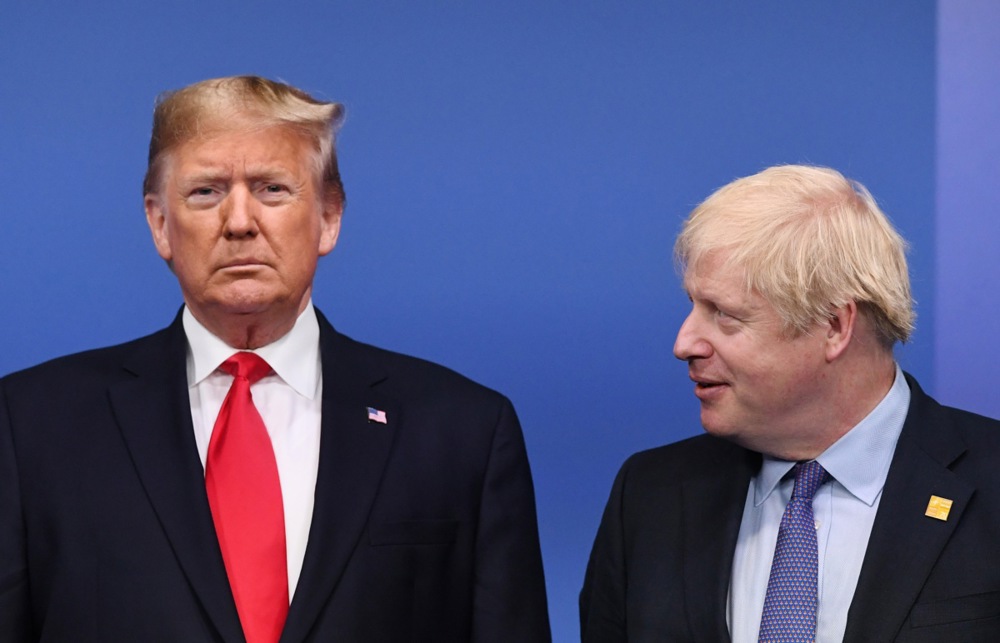Donald Trump’s real foreign policy vision in his second term remains an intriguing puzzle. The aspiration to “peace through strength”, for example, is not very easy to square with what appears to be a pointless weakening of allied relations – on which much of that “peace” depends in the first place – or with the notion of reducing the US military footprint across the world, starting with Europe. The crude takeover rhetoric directed at Greenland and Canada, the rush to settle with Russia, and the uncertainty over Taiwan policy seem to cut against the idea of making America great again, and against Trump’s otherwise clear interest in preserving US power in the world. But could there be some method – whether by design or accident – to what some critics call the “madness” of American policy today?
The most generous interpretation of what is going on in US foreign policy at the moment, already alluded to before in these pages, is that it signals a distinct geostrategic reorientation: a return to the hemispheric primacy from before the age of America’s worldwide network of overseas bases. This could be, or become, a serious and coherent strategic proposition: a Western hemisphere-based posture that might be able to sustain a significant measure of US power and influence on global affairs even from a distance, across the Atlantic and the Pacific.
In other words, there is a case to be made – perhaps with less than full confidence, for now – that “isolationism” is not completely incompatible, anymore, with power-projection, as historically understood. Unlike in previous eras, modern technology, especially in defence and transport, has “shortened” geographic distances to a degree that arguably now changes the rules of the geopolitical game. The US military is even starting to experiment with point-to-point rocket cargo transportation via space.
Long-range military strike at global scale, with devastating power, as well as corresponding defences, plus the ability to interfere with an adversary’s national security from afar – whether through targeting his economy or critical national infrastructure – are increasingly feasible strategic options for superpower states. And the rapid evolution of technology in areas from hypersonic missiles to space-based missile defence (and space-to-ground strikes, one day soon) means that this broad trend towards stand-off geopolitical control will only accelerate.
The days of forward-positioning troops for “deterrence” purposes, as NATO has done in the Cold War and after, may be coming to an end in the longer run, at least as a strategically-sound and relevant notion. In future wars, such exposed units, as well as their support bases – especially for aviation – will be more vulnerable than ever. The same applies for the enemy. Both sides in a major confrontation between technologically-advanced military powers are therefore likely to hold forces back and increasingly explore ways of engaging each other from a distance, at least in the decisive phases of a conflict. Of course, nothing will prevent decision-makers and military leaders of our time to hold to outdated modes of thinking and to the tradition of preparing for the last war (in our case, the Ukraine war, which is already and likely wrongly seen as the model for future ones).
More broadly, military service interests – particularly the traditional ones, the army, navy and air force in different countries – and their “fan-clubs” across the expert community also make it hard to break from old paradigms and capabilities. But the real changes in warfare, especially brought on by AI, missile technology and developments in the space domain, are resetting the military balance, and create the premises of new strategic principles emerging, whether the top brass admits it or not.
All this is starting to make “hemispheric defence” a potentially viable option for the United States. By definition, this would reduce the need to maintain its current global posture but without necessarily affecting America’s core security interests. This rather revolutionary idea has now been put forward openly and prominently in Foreign Affairs by Professor Stephen Rosen, one of America’s best strategic minds and a veteran of the Pentagon’s most sensitive defence planning debates during the Cold War.
Rosen suggests that America can “operate the bulk of its forces from bases in the United States and the Western Hemisphere”, and he calls for a “comprehensive hemispheric shield” which “must also be accompanied by a sword”. This is also the first major intervention in the US strategic conversation that ascribes a leading role in future defence to space power.
The “shield” is effectively now US policy after president Trump ordered the creation of the Golden Dome, a missile defence architecture covering the entire United States and including space-based interceptors. The “sword” is also at hand, as US hypersonic strike programmes are advancing and as the recapitalisation of the US nuclear arsenal is being made a priority. As Rosen explains, “precision strike capabilities mean that now, unlike at the time of Eisenhower’s massive retaliation policy, nonnuclear offensive strike forces based in the United States can carry out effective attacks, even against faraway adversaries.”
It is worth noting that, in Rosen’s view, hemispheric defence does not exclude retaining US military assets in other parts of the globe. On the contrary, he favours having “shorter-range offensive mobile weapons” deployed in certain countries close to key rivals like Russia and China – just not the usual countries. The new criteria emphasise location and complex terrain adequate for concealment, with low population densities, to make it hard for these US assets to be detected and destroyed by the enemy’s own stand-off strikes.
On this logic, Germany or Poland would be out, as would the highly-exposed current US bases in Romania. But a place like Finland would be in as a militarily-relevant site for hosting certain overseas US offensive capabilities. Judging by the rapidly forming “special relationship” between Finnish president Stubb and Donald Trump – and the sudden strengthening of US ties with Finland – Rosen’s analysis seems to be on point.
The implications of the current trends in defence technology – especially long range non-nuclear precision strike – are particularly dire for the defence of Taiwan. Rosen makes no explicit reference to Taiwan in his Foreign Affairs article, but the implication of his argument is that Taiwan itself is becoming indefensible. The US might be starting to recognise this – as Elbridge Colby’s Senate hearing suggests – in which case the need to maintain major forward deployed US forces in the Western Pacific will be reduced, as in Europe.
Again, this points to a potential US consolidation in its own hemisphere on the Pacific side, looking to compete with China – and defend against it – at range, perhaps with the addition of a layer of smaller capabilities left behind in outposts like Japan or the Philippines.
The fundamental condition for hemispheric defence is, of course, US dominance of North and South America – a US foreign policy concept that goes back to the Monroe Doctrine in the early 19th century. South America presents a comparatively easier task as these nations are far from any US rivals, and US economic and military power can be more easily applied to secure this region. Still, a sound hemispheric strategy would be expected to aim to secure key friends and anchor points for US interests in this geography.
And this is exactly what is happening, particularly with Argentina, whose exceptional president, Javier Milei, is a favourite at the White House; and with El Salvador, where president Nayib Bukele already works closely with the Trump Administration, so far mostly on offering prison places for US inmates.
The harder task for the US is ensuring the long-term control of its northern approaches, for two objective reasons. The first is that Canada is a major G7 economy which is not easy for the US to “dominate”, and which has other geopolitical and geoeconomic options as well, e.g. through the Anglosphere and Commonwealth, and through the EU.
The second reason is America’s significant exposure to direct military threats from Russia (and perhaps China in the future) over the North Pole and through the Arctic – which is why Greenland really is very important strategically to US national security in the long term. None of this means that the best way to secure evolving US interests with respect to Canada and Greenland is through the kind of approach taken by Trump so far.
But it is important to note that even though Trump’s methods in these two cases are sub-optimal and, likely, counter-productive (there is still time to reverse course), his instincts as to the importance of these two particular geographies are fundamentally sound. Again, both Canada and Greenland would be essential components for a forward-looking US hemispheric defence strategy – especially, ironically, in view of the effects of climate change on the Arctic environment. Trump’s earnestness with respect to these two entities is better explained through this lens than anything else.
It is perhaps premature to suspect the existence of a fully-formed hemispheric defence strategy at the level of the White House, that drives and explains current Administration policy. Indeed, this is rarely ever the case at times of great shifts in geopolitical orders. What can be observed for now, however, is that a majority of the policy decisions and the behaviours of the Trump Administration seem to have a common thread – one that connects to a new hemispheric concept for US strategy, however loosely it may be defined at this stage among Trump’s team.
What Professor Rosen’s landmark piece in Foreign Affairs shows is that the idea of a hemispheric defence – should this be what Trump is ultimately aiming at – is not to be dismissed out of hand. It may be a radical notion, and it certainly goes against 80 years of post-WWII strategic tradition (in the US and allied countries), but it could well be a viable option that should be taken seriously as technology – particularly space – continues to disrupt the geostrategic environment. We have been warned.






Zelensky drags America into war, or Zelensky loses